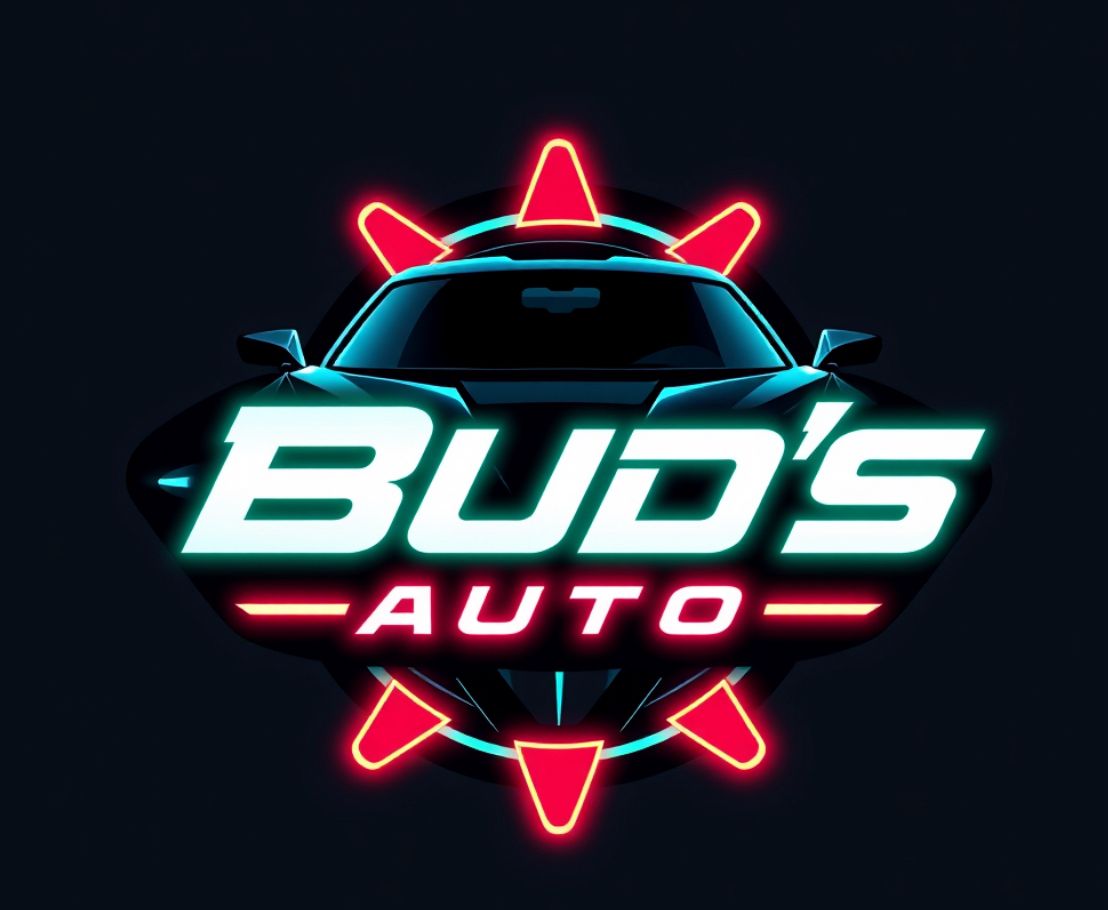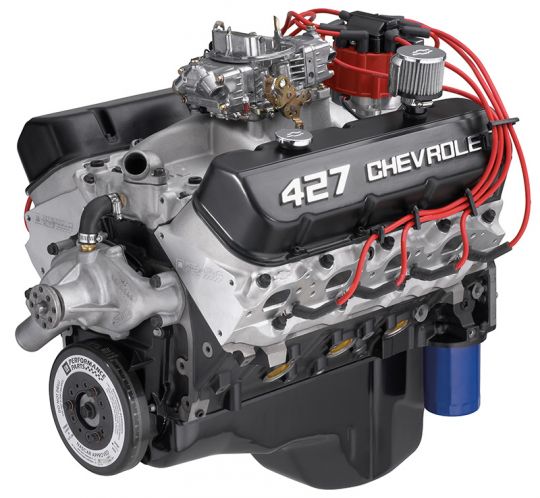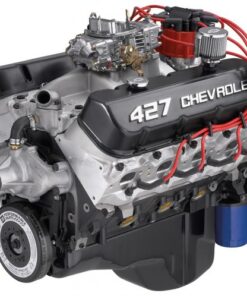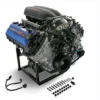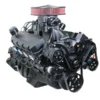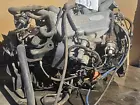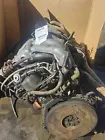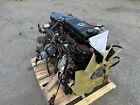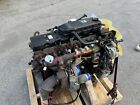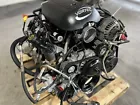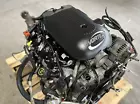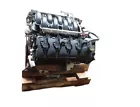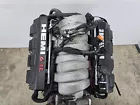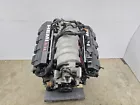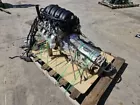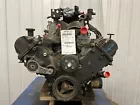The Chevy Big-Block V8 L88 427 is one of the most legendary and iconic engines ever produced by Chevrolet. Known for its extreme performance capabilities, the L88 427 was designed specifically for racing and high-performance applications, but it also made its way into some of the most coveted muscle cars of the 1960s.
Key Details of the Chevy Big-Block V8 L88 427
Engine Specifications
-
Engine Type: V8
-
Displacement: 427 cubic inches (7.0 liters)
-
Bore x Stroke: 4.25 x 4.00 inches (108 x 101.6 mm)
-
Compression Ratio: 12.5:1 (extremely high, designed for racing fuel)
-
Induction: Holley 850 CFM 4-barrel carburetor with an aluminum intake manifold
-
Horsepower: Rated at 430 hp (though it was known to be closer to 500+ hp in real-world conditions)
-
Torque: 460 lb-ft
-
Valvetrain: OHV, with solid lifters, double valve springs, and a high-lift camshaft designed for maximum performance.
-
Fuel System: Carbureted (as was common at the time)
-
Cooling: High-performance aluminum radiator and heavy-duty cooling system for extreme heat dissipation.
Performance and Real-World Applications
The L88 427 was developed by Chevrolet as a racing engine first, and it was designed to meet the needs of high-performance vehicles, specifically for the Corvette. It became a centerpiece in Chevrolet’s performance lineup during the 1960s.
Here’s a breakdown of how it performed:
1. Chevrolet Corvette Chevy Big-Block V8 L88 427 (1967–1969)
The L88 engine was available as an optional engine for the 1967-1969 Chevrolet Corvette, and it was designed for serious enthusiasts and racers. Notably, this engine was not advertised to the public as an option because Chevrolet didn’t want to encourage street racing with such a potent engine. But when it did find its way into Corvettes, it became a legendary piece of automotive history.
-
0–60 mph: Around 4.5 seconds (in a 1969 Corvette, which was blisteringly fast for its time)
-
Quarter-Mile Time: Low 13s (roughly 13.2 seconds at 110 mph)
-
Top Speed: Around 150 mph
These numbers were unheard of for production cars in the late 1960s, and the L88 engine helped solidify the Corvette as one of the most powerful production cars on the road.
2. Racing Use
While the L88 wasn’t primarily available for street use, it was heavily involved in professional racing, particularly in SCCA racing, drag racing, and endurance racing. It competed in events like the 24 Hours of Le Mans, where the Corvette brand was becoming known as a serious player in the global racing scene.
-
The L88 engine was used in racing applications, where it could be tuned to exceed 500 hp, pushing the engine even harder for the track.
Engine Characteristics
The L88 427 was designed with a very specific purpose in mind: maximum horsepower in a production-based engine. Here’s what made it so special:
1. High Compression Ratio
The 12.5:1 compression ratio was extremely high for the time, meaning the engine needed high-octane fuel to prevent knocking. The high compression ratio allowed the L88 to generate extreme amounts of power, but it required owners to use racing fuel or premium-grade fuel to achieve its full potential.
2. Solid-Lifter Camshaft
The engine came equipped with a solid-lifter camshaft, which was a significant step up from the hydraulic lifters commonly used in street engines. The solid lifters allowed for higher RPMs and more aggressive cam profiles, which were necessary for maximizing power at high revs. This camshaft design, along with the engine’s high-flow aluminum intake and dual exhaust system, contributed to its race-like performance.
3. Carburetor and Induction
The Chevy Big-Block V8 L88 427 was equipped with a Holley 850 CFM 4-barrel carburetor, which ensured that the engine had enough fuel to match the extreme air intake. This carburetor was designed to handle the air demands of the engine, which, combined with its high-flow heads and large aluminum intake manifold, allowed the L88 to produce an immense amount of power.
4. Aluminum Heads and Intake
The Chevy Big-Block V8 L88 427engine used aluminum heads, which helped reduce weight and improve cooling. The high-performance cylinder heads featured larger ports and valves to allow for better airflow and more efficient combustion. The aluminum intake manifold helped reduce overall weight while ensuring better heat dissipation.
5. Racing Specifications
In addition to the standard features, the L88 engine was equipped with high-strength forged internals (forged pistons, rods, and crankshaft), which allowed it to withstand the extreme stress of high RPMs and heavy throttle usage. It was a true racing-spec engine in every sense of the word.
Legacy of the Chevy Big-Block V8 L88 427
The Chevy Big-Block L88 427 has since become a legend and is one of the most sought-after engines for muscle car collectors and restorers. Several reasons contribute to its iconic status:
1. Rarity and Exclusivity
The L88 engine was extremely rare in its day. Only 216 Corvettes were produced with the L88 engine option between 1967 and 1969, making it one of the rarest options available. Many of these L88-equipped Corvettes were also used for racing, further adding to their mystique and increasing their desirability among collectors.
2. Performance at the Time
When the Chevy Big-Block V8 L88 427debuted, it completely redefined what was possible with a production car. With 430 hp (and realistically closer to 500 hp) on tap, it was one of the most powerful engines available in any car at the time, easily outstripping most of its competitors in terms of raw performance.
3. The Enduring Popularity in the Aftermarket
Even today, the Chevy Big-Block V8 L88 427 engine remains one of the most coveted engines for restoration projects, custom builds, and resto-mods. Some enthusiasts seek to replicate the L88 engine in modern-day muscle cars by sourcing parts or building similar specifications in their own builds.
4. Record-Breaking Auction Sales
The rarity and performance of the L88 Corvette have made it one of the highest-grossing muscle car models at auction. It’s not unusual for an L88 Corvette to fetch millions of dollars at auction, especially if it is in original condition with matching numbers.
The Chevy Big-Block V8 L88 427 in the Modern Day
While the L88 is long out of production, its influence on muscle car culture and the Corvette legacy remains immense. Today, the Chevy Corvette Z06 and other high-performance Chevrolet models are descendants of the L88’s legacy, continuing to push the boundaries of what a naturally aspirated engine can achieve in terms of raw power and handling.
If you’re interested in modern builds that echo the L88’s power, you might look at engines like the Chevy 7.0L LS7 or the LT4 supercharged engines found in the latest Z06 and Camaro ZL1 models.
Modifications and Modern Builds with the Chevy Big-Block V8 L88 427
Although the original L88 engine is a rare classic, modern enthusiasts often build replicas or resto-mods based on the L88 specifications.
Popular Upgrades and Modifications:
-
Edelbrock Performer RPM Heads: These aftermarket aluminum heads help improve airflow, reducing weight and improving power.
-
Holley Sniper EFI Systems: Many modern L88 builds use electronic fuel injection (EFI) systems to enhance fuel management and increase drivability.
-
Camshaft Upgrades: Modern L88 replica builds often use more aggressive cam profiles to take advantage of modern materials and engine tech.
-
Turbocharging or Supercharging: Some modern enthusiasts boost the L88’s power potential even further by adding superchargers or turbochargers to enhance low-end torque and top-end power .Conclusion
The Chevy Big-Block L88 427 is an engine that remains at the pinnacle of American muscle car history. From its beginnings as a race-focused powerhouse to its status today as a collector’s item, the L88 continues to capture the imagination of automotive enthusiasts and collectors alike. It represents a time when manufacturers pushed the boundaries of performance, resulting in cars that were not only incredibly powerful but also incredibly rare and iconic. Certainly! Let’s continue exploring the Chevy Big-Block L88 427 and its lasting impact on the automotive world. We’ll take a deeper dive into the technical aspects, how it stacks up against modern performance engines, and how enthusiasts still keep the L88’s spirit alive today.
